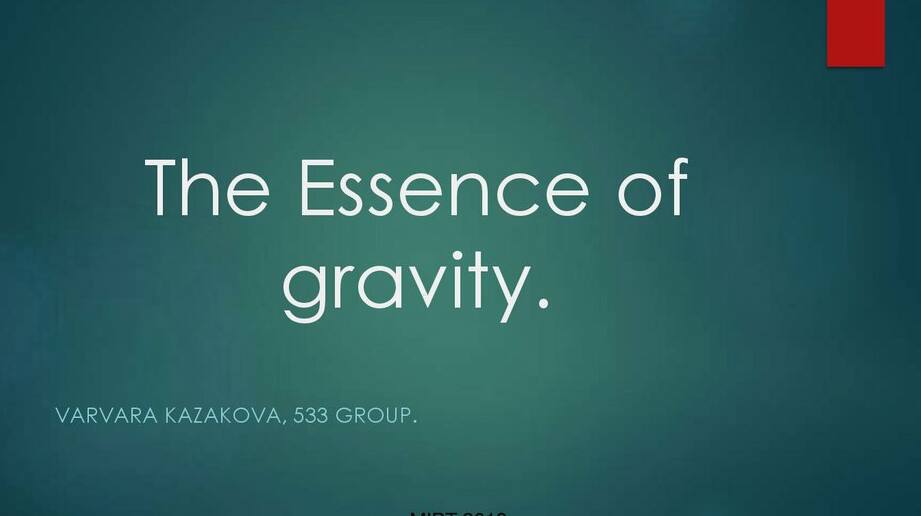The multitude of forces we experience in our daily lives can be classified into four main categories: gravity, electromagnetism, strong force, and weak force. Recently, scientists have uncovered potential indications of a fifth fundamental force of nature, as we previously discussed. Now, it is essential to delve into the mechanics of these fundamental forces.
Explore the concept of “Hitech” in
The bedrock of the cosmos
Are you familiar with various types of forces? The force of gravity, the tension in a string, the compression of a spring, the collision of objects, the force of friction, explosions, air and medium resistance, the surface tension of a liquid, the Van der Waals force – the list goes on. However, all these forces can be traced back to the four fundamental forces. These forces, also known as fundamental interactions, govern all the processes in the vast expanse of the Universe. If we were to compare elementary particles to mosaic tiles, the interactions between them act as the adhesive holding everything together. In ascending order of strength, scientists have categorized these interactions as gravitational, weak, electromagnetic, and strong. These forces cannot be broken down into simpler components, which is why they are referred to as fundamental.
It is important to take into consideration that at present, we have a reliable understanding of four essential interactions (excluding the Higgs field).
The phenomenon of gravity – gravitational interaction
Gravity refers to the force of attraction between two objects that possess mass or energy. This fundamental force is evident in our everyday lives, allowing us to sit, stand, and lay down. We witness the effects of gravitational force when a stone falls from a cliff, when a planet orbits a star, or when we experience the ebb and flow of the tides, which are influenced by the moon. Gravity is the most instinctive and well-known of the fundamental forces, yet its explanation remains elusive.
The concept of gravity was first introduced by Isaac Newton, who was supposedly inspired by an apple falling from a tree. Newton described gravity as a physical attraction between two objects. Centuries later, Albert Einstein proposed a different explanation in his General Theory of Relativity (GTR). According to Einstein, gravity is not a force or attraction, but rather a result of objects bending space-time. In this theory, a massive object behaves similarly to a heavy ball placed in the center of a sheet of paper, causing the sheet to warp and smaller objects to be pulled towards the center.
Despite the fact that gravity is responsible for the cohesion of planets, stars, solar systems, and even entire galaxies, it is actually the weakest of the fundamental forces, particularly on a molecular and atomic scale. Consider this: how much effort does it take to lift a ball off the ground? Or raise a leg? Or jump? All of these actions work against the gravitational force exerted by the Earth. At the molecular and atomic levels, gravity has minimal impact on the other fundamental forces.
The weak nuclear force, also known as the weak interaction, is the force responsible for the decay of particles. It causes a literal transformation of one type of subatomic particle into another. For example, when a neutrino collides with a neutron, it can convert the neutron into a proton and the neutrino into an electron.
Physicists explain this interaction by the exchange of certain particles called bosons. These bosons, which are charged particles known as W- and Z-bosons, mediate the weak interaction as well as the electromagnetic and strong interactions. When subatomic particles such as protons, neutrons, and electrons are approximately 10^-18 meters (0.1% of a proton’s diameter) apart, they can exchange these bosons. As a result, the original subatomic particles undergo decay and transform into new particles.
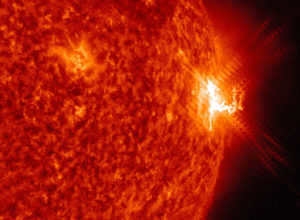
Weak interactions play a crucial role in nuclear fusion reactions. These interactions are responsible for the Sun’s power and the production of energy necessary for the existence of most life forms on our planet. Interestingly, archaeologists utilize carbon-14 to establish the age of ancient bones, wood, and other organic artifacts. Carbon-14 consists of six protons and eight neutrons. One of these neutrons undergoes decay and transforms into a proton, resulting in the formation of nitrogen-14, which contains seven protons and seven neutrons. This decay process follows a predictable rate, enabling scientists to determine the age of these artifacts.
Electromagnetic force
The Lorentz force, also known as the electromagnetic force, is responsible for the interaction between charged particles, such as electrons (which have a negative charge) and protons (which have a positive charge). Opposite charges are attracted to each other, while like charges repel each other. The strength of the force depends on the magnitude of the charges involved. Similar to gravity, the electromagnetic force can be felt.
As its name suggests, the electromagnetic force is composed of two distinct components: the electric force and the magnetic force. Initially, physicists treated these forces as separate entities, but later discovered that they are actually different aspects of the same force.
The electrical component functions by interacting with charged particles, regardless of whether they are stationary or in motion, resulting in the creation of a field. This field enables the charges to influence one another. However, when these charged particles are in motion, they also generate a secondary component known as the magnetic force. This movement produces a magnetic field surrounding the particles. Consequently, when electrons flow through a wire to power a device like a computer, phone, or television, the wire itself becomes magnetic.
Electromagnetic forces are transmitted between charged particles through the exchange of massless bosons called photons, which are also particles of light. It’s important to note that these force-carrying photons represent a distinct manifestation of photons. According to the University of Tennessee at Knoxville, they are considered virtual and undetectable, despite being technically identical to real and detectable photons.
The strong nuclear force is incredibly stronger than gravity
The strong nuclear force, also known as the strong interaction, is the most potent out of the four fundamental forces in nature. According to HyperPhysics, it is 6 sextillion times stronger than gravity (that’s 39 zeros after 6). Its main function is to bind the elementary particles of matter together, forming larger particles. It is responsible for keeping the quarks, which make up protons and neutrons, intact. Additionally, it plays a role in holding the protons and neutrons within an atom’s nucleus together.
The strong interaction, similar to the weak interaction, operates exclusively when subatomic particles are in close proximity. Specifically, they must be within a distance of approximately 10^-15 meters, which is roughly equivalent to the diameter of a proton.
However, the strong force can be referred to as “peculiar”. The key point is that, unlike other fundamental forces, it weakens as subatomic particles approach each other. According to researchers at Fermilab, the strong force reaches its maximum “strength” when particles are as far apart as possible. Once within range, massless charged particles called gluons transfer the strong force between quarks, effectively keeping them “attached” to each other. A small portion of the strong force, known as the residual strong force, acts between protons and neutrons. Protons within the nucleus repel each other due to their like charges, but the residual strong force is capable of overcoming this repulsion. This is why particles remain bound together within the nucleus of an atom.
The concept of grand unification and the theory of everything
One of the ongoing debates in physics revolves around the four fundamental forces and whether they are interconnected manifestations of a single overarching force that governs the universe. If this is indeed the case, it would imply that these forces can be unified and merged together. And there are already indications that support this idea.
Physicists have faced significant challenges in reconciling the microscopic and macroscopic worlds. Gravity dominates on large scales, such as in astronomical phenomena, and is best explained by Einstein’s general theory of relativity. On the other hand, quantum mechanics provides the most accurate description of the natural world at the molecular, atomic, or subatomic level. However, there is currently no successful unification of these two realms.
To delve deeper into this topic, you can read more.
Moving on to another subject, the Higgs field plays a crucial role in spontaneous symmetry breaking of electroweak interactions. This concept is a result of the vacuum undergoing symmetry breaking and is named after the British physicist Peter Higgs, who developed its theory. The Higgs particle, also known as the Higgs boson, is a quantum particle associated with this field.
W- and Z-bosons are elementary particles that act as carriers of the weak force. Their discovery is considered a significant achievement of the Standard Model of particle physics. The W-boson is named after the weak force it mediates.
Carbon-14 is a radioactive isotope of the chemical element carbon, with an atomic number of 6 and a mass number of 14.
Nitrogen isotopes refer to different forms of nitrogen atoms that have varying numbers of neutrons in their nuclei. Natural nitrogen consists of two stable isotopes, ¹⁴N and ¹⁵N, with atomic concentrations of 0.99636 and 0.00364, respectively.
A neutral particle refers to an elementary particle that is devoid of any electric charge. Examples of neutral particles include the photon, neutron, and neutrino. It is worth noting that neutral particles may possess a magnetic moment and electric moments of higher multipoles, such as the quadrupole moment.
The normal reaction force is a force that acts on a body from the side of support and is directed perpendicular to the contact surface. This force is distributed across the area of the contact zone. When analyzing the dynamics of body motion, it is essential to take the normal reaction force into consideration. It plays a significant role in the law of Amonton-Coulomb.

Astonishing revelations
When you lay eyes upon the subject of your affection, you may ponder whether the sentiment is reciprocated. It would undoubtedly make it much simpler for you to approach an individual knowing that they too are drawn to you.
Psychologists assert that there exist explicit and nearly intangible indications of unspoken allure that one must not overlook.
In a 2018 study released in the publication Psychological Bulletin, researchers discovered that individuals display certain behaviors when they harbor strong feelings for someone.
We begin to mirror the actions of the other person, we strive to initiate conversation, and we yearn to be in close proximity. Additionally, nonverbal cues are present, such as prolonged gazes, subtle touches, and a desire to elicit laughter.
There are additional indications that suggest a shared attraction or potentially deeper connection.
The connection between a man and a woman
1. Extended eye contact

The eyes serve as a reflection of one’s inner self. They possess the unique ability to convey intense emotions and physical allure.
Typically, we don’t typically engage in prolonged eye contact with individuals with whom we lack a special connection.
Generally, the exchange of a meaningful gaze during conversation can indicate a mutual attraction. It’s as if the person is solely captivated by your presence in that very moment.
If you manage to stir up emotions within someone, they will naturally keep their eyes fixated on you, even if they are unaware of it.
Have you ever noticed someone looking deeply into your eyes without averting their gaze? If so, you should know that this person is deeply attracted to you.
2. You playfully taunt each other
Remember when boys used to pull girls’ pigtails when they were kids? It was a way to get their attention and show affection.
In the adult world, we can playfully taunt each other in various ways, usually through verbal banter. If you and this person are constantly teasing each other and both recognize it as a joke, then there is undoubtedly a special bond between you.
Combine this with laughter and subtle touches, and you can definitely say that there is an unspoken mutual attraction.
3. Excitement
When we have a strong liking for someone, we experience a difficulty in focusing and feel restless. We become anxious because we start to overthink and are afraid of making mistakes.
Therefore, anxiety is usually an indication and another sign of a profound connection.
Other indications may include heightened blood circulation and fast respiration. You’re practically gasping for breath.
4. Mirroring of gestures
Have you ever noticed how someone immediately or a few seconds later starts doing the same thing as you? It’s not just a coincidence.
In the field of psychology, this phenomenon is known as mirroring, and it happens when there is a strong emotional connection and physical attraction between individuals.
For instance, when you touch your hair and the other person does the same, it signifies a strong attraction towards you, and the imitation of your gestures occurs instinctively.
5. You are fond of each other’s fragrance
If you believed that only appearance determines your appeal to someone else, you are mistaken.
We emit our own distinct fragrance, which plays a bigger role in mutual attraction than you may realize.
We seldom offer compliments about each other’s scent. However, if someone tells you they enjoy your aroma, there is a strong possibility that they are highly attracted to you.
6. Touch
Reworking the text to make it unique while keeping the HTML markup:
6. Feel

Physical contact is a fundamental form of conveying emotions through body language. However, we are not referring to intentional touches, but rather those that occur incidentally.
If you observe that while conversing or engaging in activities together, you frequently and subtly touch each other’s knees, arms, or shoulders, it is a clear indication of a strong sexual tension and attraction between you.
The attraction between the two of you is so intense that it feels as if an invisible force is pulling you towards each other, much like magnets.
7. Attempting to Make a Lasting Impression
When someone is making an effort to impress the other person, it demonstrates a desire to be admired and recognized.
If you observe that an individual consistently dresses up, tries to make you laugh, and boasts about their accomplishments, they are doing so because they genuinely like you and want to make a good impression.
Furthermore, the more we strive to impress the other person, the more anxious we become. A quivering voice, restlessness, and excitement in their presence reveal strong emotions and indicate a significant attraction.
One of the unmistakable signs of unspoken attraction is losing all interest in others. In simpler terms, you no longer pay attention to the people you typically spend time with.
When we are in love, our focus shifts towards the person we love, completely engrossed in our conversations with them.
Nothing else seems to matter except for you, and time seems to vanish whenever you’re nearby.
The intense attraction causes you to simply overlook whatever is happening around you.
9. Has an exceptional memory for details
When someone is interested in us, they make an effort to understand us better. They will seize every opportunity to engage in conversation with us.
If you notice that this person recalls small details that you casually mention and brings them up later in the conversation, it’s a positive sign.
Perhaps they remember that you have a cat allergy or that you dislike dark chocolate. All of these indications suggest that they are attentive to your words and subconsciously envision a future together.
10. Frequently expresses joy and amusement in your company
Have you observed that the individual endeavors to elicit laughter from you or vice versa?
Expressing laughter and smiling when in the presence of the person you admire is one of the key indicators that they are making an effort to impress you and relishing every moment spent together.
This is particularly true for men. When they are interested in someone, they will make an effort to make the woman laugh because they want to witness her happiness..
They desire for her to enjoy their companionship and feel at ease around them.
11. Altering their vocal tone
When there is a strong attraction towards someone, individuals naturally alter their vocal tone, sometimes without even realizing it. Men often attempt to deepen their voices in order to appear more masculine.
A study conducted by experts from the University of Sussex in the UK, Wroclaw University in Poland, and the University of Social Sciences and Humanities, also in Poland, involved analyzing the voices of 30 men during speed dating events at cafes.
Upon listening to the recordings, the researchers made an unexpected observation: both men and women slightly lowered their voices when they felt a genuine connection with someone.
A similar phenomenon can be observed in children. When communicating with someone they like, individuals unconsciously modify the intonation of their voice to establish a closer bond and demonstrate their affinity. This can also foster a sense of sexual attraction between individuals.
This is an often overlooked indication of magnetic attraction as our attention is typically drawn to more obvious signs such as smiling and physical contact.
However, the power of comfortable silence should not be underestimated. It is a rare occurrence and we will not feel at ease if there is no physical or psychological connection between us.
It is also one of the most unmistakable indicators of sexual attraction between individuals when we are able to experience true intimacy without the need for words.
- thethoughtcatalogs – 10 unmistakable signs of silent attraction
- bbc – Voice changes can reveal who you are attracted to.
- cnn – What makes you appealing: scent, voice
Gravity can be compared to love – objects are drawn towards each other with forces of equal magnitude that diminish as the distance between them increases. It is true that the forces also grow stronger as the mass increases, but for the sake of analogy, let’s pretend they remain similar.

Gravitational Force
The Earth acts as a massive magnet, possessing an actual magnetic field. However, our focus now lies on a different phenomenon – the force that attracts objects towards the Earth, ranging from a kitten leaping from a tree to an asteroid passing by. This force is known as gravity.
Imagine two objects, one with a substantial mass and the other with a smaller mass. Let’s stretch out a massive sheet and place the object with the higher mass on it. Then, position the smaller object on top. The result would be as follows:
The smaller object will begin to experience an attraction towards the larger one – this is gravity. In essence, the Earth acts as a massive sphere while all other objects, regardless of their shape, are comparatively smaller.
The force of gravity is universal and applies to all types of matter. It is only attractive in nature and does not cause repulsion between bodies.
Out of all the fundamental interactions, gravity is the weakest. While it does act between all elementary particles, it is typically negligible. This is because gravity depends on the mass of an object, and for particles, it is extremely small. Isaac Newton was the first to formulate this dependence.
Enjoy convenient classes with a variety of 10+ circle options, and say goodbye to the stress of homework and tedious parent-teacher conferences.

The Theory of Gravitational Attraction
In 1682, Sir Isaac Newton unveiled the theory of gravitational attraction. It states that all objects are drawn towards each other, and the strength of this gravitational force is directly proportional to the product of their masses and inversely proportional to the square of the distance between them.
The mathematical representation of this theory is as follows:
Law of Universal Gravitation
F – gravitational force [N]
M – mass of the first object (often a celestial body) [kg]
m – mass of the second object [kg]
R – distance between the objects [m]
G – gravitational constant
G = 6.67 × 10-11 m3 kg-1 s-2
When we step onto a scale, the arrow will move due to the Earth’s massive weight and gravity pushing us down. On the Moon, which is lighter, a person weighs about six times less.
The universal law of gravitation is used to calculate the forces between objects of any shape, as long as the objects are much smaller than the distance between them.
If we take two balls, we can apply this law to them regardless of their distance apart. In this case, the distance R between the objects is the distance between the centers of the balls.
One-time issue
There is a situation where two planets orbit a star in a circular manner and have the same mass. However, the first planet has a radius of orbit that is twice as large as the second planet. What is the comparison between the gravitational forces of the first and second planets on the star?
According to the law of universal gravitation, the gravitational force between a planet and a star is inversely proportional to the square of the orbit radius. Therefore, due to the equal masses, the ratio of the gravitational forces exerted by the first and second planets on the star is inversely proportional to the ratio of the square of their orbit radii:
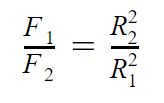
According to convention, the orbital radius of the first planet is twice that of the second planet, meaning R1 = 2R2.

Solution: The gravitational force acting on the astronaut in a spacecraft moving in a circular orbit around the Moon can be found using the formula for gravitational force, which is given by:
F = (G * M * m) / r^2
Where F is the gravitational force, G is the gravitational constant, M is the mass of the Moon, m is the mass of the astronaut, and r is the distance between the center of the Moon and the spacecraft.
We are given that the gravitational force acting on the astronaut at the surface of the Moon is 144 N. Let’s assume that the mass of the astronaut is m kg.
Using this information, we can solve for the mass of the Moon, M:
M = (F * r^2) / (G * m)
Now, we can calculate the gravitational force acting on the astronaut in the spacecraft:
F = (G * M * m) / (3 * r)^2
Substituting the values of M and r, we get:
F = (G * ((F * r^2) / (G * m)) * m) / (3 * r)^2
Simplifying the equation, we get:
F = F / 9
Therefore, the gravitational force acting on the astronaut in the spacecraft is one-ninth of the gravitational force acting on the astronaut at the surface of the Moon.
Online physics lessons at Skysmart are just as fun as our articles!
Problem Two
At the surface of the Moon, an astronaut is subjected to a gravitational force of 144 N. What is the gravitational force acting from the side of the Moon on the same astronaut in a spacecraft moving in a circular orbit around the Moon at a distance of three lunar radii from its center?
Response: The gravitational force on the astronaut will be 16 N when they are three lunar radii away from the center.
It is accurate to state that a body is not acted upon by gravitational force, but rather the Earth attracts a body with gravitational force.

Acceleration due to gravity
In order to derive the acceleration due to gravity in a mathematically correct and elegant manner, we first need to introduce the concept of gravity.
Gravity is the force with which the Earth attracts all objects.
Gravity
F – force of gravity [N]
m – mass of the object [kg]
g – acceleration due to gravity [m/s2]
On planet Earth, g is approximately equal to 9.8 m/s2, but we will discuss this in more detail later. ��
At first sight, the force of gravity appears to be very similar to the weight of an object. In fact, when an object is at rest on the surface of the Earth, the formulas for gravity and weight are indistinguishable. The weight of an object at rest is numerically equal to the object’s mass multiplied by the acceleration due to gravity, with the only distinction being the point at which the force is applied.
Gravity is the force exerted by the Earth on the object, while weight is the force exerted by the object on its support. This implies that they will have different points of application: gravity acts at the object’s center of mass, while weight acts at the support.
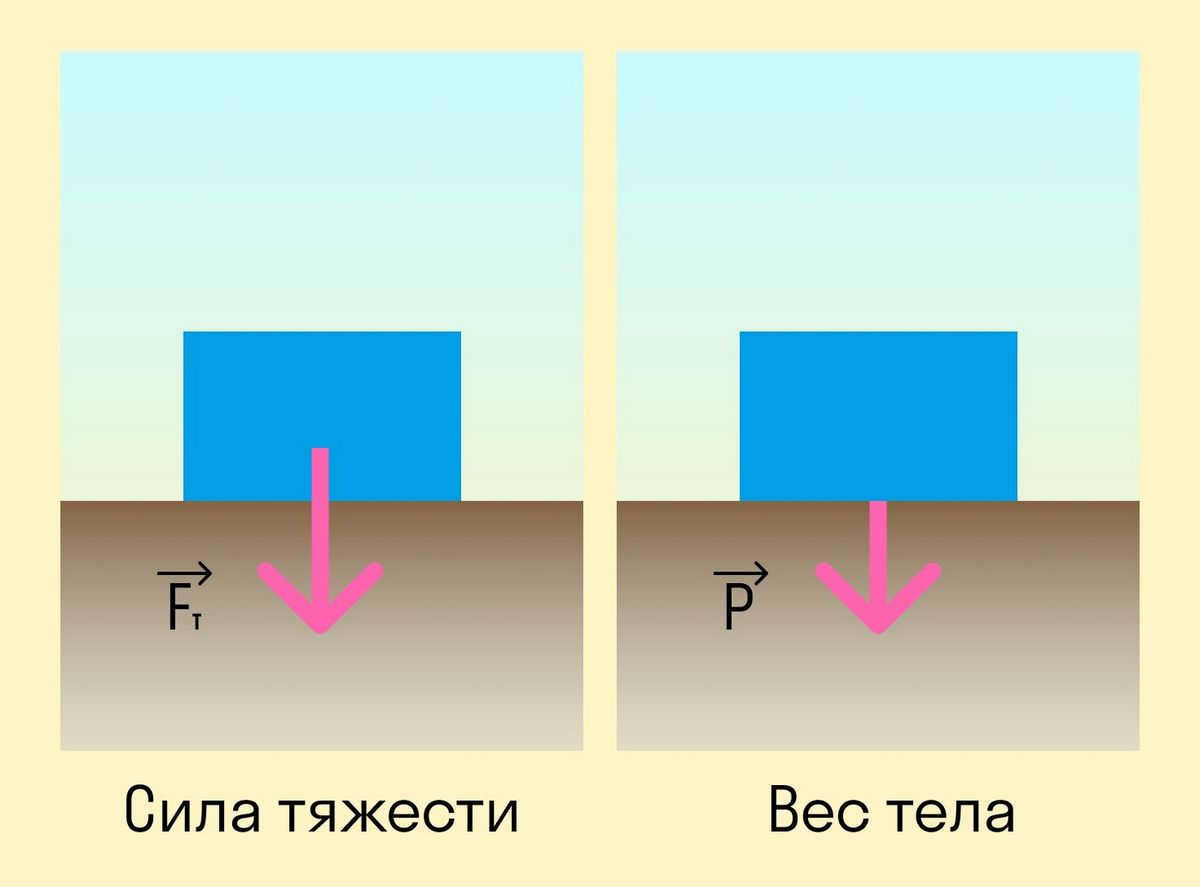
It is important to understand that the gravitational force is determined solely by the mass of an object and the planet on which it is located. Additionally, the weight of an object is influenced by the acceleration at which it or its support is moving.
For instance, when riding in an elevator, the weight of the passengers is influenced by their direction of motion and the acceleration of the elevator. On the other hand, the force of gravity is not affected by external factors and remains constant.
Upon closer examination, the force of gravity bears a striking resemblance to the force of attraction. Both forces involve a pull towards each other, making them essentially the same thing. In practical terms, at least.
We can state that when discussing the Earth and an object attracted to it, it can be considered the same thing. In this case, we can even equate these forces and express the formula for the acceleration of free fall:
By equating the right-hand sides:
Dividing both sides of the equation by the mass of the body:
This will give us the formula for the acceleration of free fall. The acceleration of free fall is unique for each planet.
The law of universal gravitation
g – acceleration of free fall [m/s2]
M – planet mass [kg]
R – distance between bodies [m]
G – gravitational constant
G = 6.67 x 10-11 m3 kg-1 s-2
Acceleration of free fall characterizes the rate at which the velocity of a body increases during free fall.
Free fall refers to the motion of an object in a vacuum, where only the force of gravity is acting on it, resulting in accelerated movement.
However, does the mass of the object play a role in free fall?
No, it does not. In fact, all objects experience the same acceleration regardless of their mass. If we compare a feather and a ball, the feather will fall at a slower rate, but this is not due to the acceleration of free fall. Instead, it is because the feather’s low mass causes air resistance to have a greater impact on its motion compared to the ball. However, if we were to place both the feather and the ball in a vacuum, they would fall simultaneously.
Newton’s Third Law
The principle of Newton’s third law summarizes a vast array of experiments demonstrating that forces arise from the interaction between bodies.
According to this principle, bodies exert forces on each other that are equal in magnitude and opposite in direction.
In simpler terms, the force of action is equal to the force of reaction.
If you find yourself needing to explain physics in everyday language, you can put it like this: for every force, there is an equal and opposite force. 🙈
Newton’s third law
F1 – represents the force exerted by the first body on the second [N]
F2 – denotes the force exerted by the second body on the first [N]
Well, the law of gravity also obeys Newton’s third law. The Earth exerts a force on the body, and the body exerts an equal force on the Earth.
Practice problem
The Earth pulls a thrown ball with a force of 5 N. What force does the ball exert on the Earth?
According to Newton’s third law, the force with which the Earth attracts the ball is the same as the force with which the ball attracts the Earth.
Answer: The ball pulls the Earth with a force of 5 N.
At first, this might seem strange because we usually associate force with displacement: if the force is the same, then the Earth should move the same distance. Technically, this is true, but the ball has a much smaller mass compared to the Earth. As a result, the Earth moves an incredibly tiny distance in response to the ball’s attraction, which is too small to be visible unlike the falling ball.
If each thrown ball causes the Earth to move, even if it’s just a small distance, one might wonder why the Earth hasn’t fallen out of its orbit due to all of these movements. However, it’s similar to a tug-of-war: if two teams of equal strength pull on a rope, it won’t move. The same principle applies to our planet.
Join a free course for modern parents offered by child psychologist Ekaterina Murashova. By signing up, you will also have a chance to win 8 lessons.
Gravity, also known as attraction or gravitation, is a fundamental characteristic of matter that is present in all objects and bodies throughout the universe. The concept of gravity states that all physical bodies attract one another.
If gravity is a universal concept and attribute that all objects in the universe possess, then the Earth’s gravitational pull is a specific instance of this overarching phenomenon. The Earth exerts an attractive force on all material objects situated on its surface. This gravitational pull allows for the movement of people and animals on the Earth, the containment of rivers, seas, and oceans within their boundaries, and the formation of the atmosphere, preventing the dispersion of air into the vastness of Space.
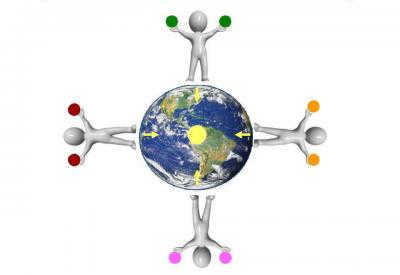
One may wonder: why does the Earth attract humans and animals towards itself, rather than the other way around? To begin with, we do indeed exert a gravitational pull on the Earth, but our gravitational force is incredibly small compared to that of the Earth. Additionally, the strength of the gravitational force is directly proportional to the mass of an object: the smaller the mass, the weaker the gravitational force.
Another factor that affects the gravitational force is the distance between objects: the further apart they are, the weaker the gravitational effect. This is also why planets are able to orbit without colliding with each other.
It should be noted that the spherical shape of the Earth, Moon, Sun, and other planets is a result of the gravitational force. This force pulls matter towards the center of the planet, giving it its spherical “body”.
The gravitational field of the Earth
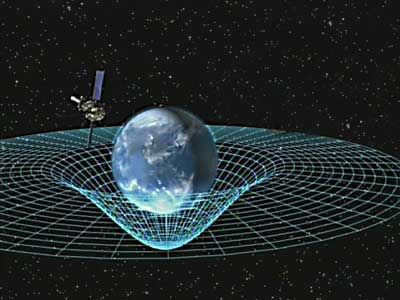
The gravitational field of the Earth is a force field that is created around our planet as a result of the interaction of two forces:
- gravity;
- centrifugal force, which is caused by the Earth’s rotation around its axis (daily rotation).
Since both gravity and centrifugal force are constantly acting, the gravitational field is a persistent phenomenon.
The field is slightly influenced by the gravitational forces of the Sun, Moon, and other celestial bodies, as well as the masses of the Earth’s atmosphere.

According to a well-known story, Sir Isaac Newton, an English physicist, was once strolling in the garden one afternoon when he observed the moon in the sky. At the same moment, an apple dropped from a tree branch. Newton, who was studying the law of motion at the time, understood that the apple fell due to the gravitational field, just as the moon orbits the Earth.
In that brilliant scientist’s enlightened mind, an idea emerged: perhaps the apple descends to the ground due to the same force that keeps the moon in its orbit, rather than being randomly scattered throughout the galaxy. This marked the discovery of the law of universal gravitation, also known as Newton’s Third Law.
In the language of mathematical equations, this law can be expressed as:
where F represents the force of mutual gravitation between two objects.
M – represents the mass of the initial object;
m – denotes the mass of the second object;
D 2 – signifies the distance between the two objects;
G – symbolizes the gravitational constant, which is equivalent to 6.67×10 -11 .
One of the most crucial phenomena that physicists constantly investigate is the concept of motion. Electromagnetic phenomena, laws of mechanics, thermodynamic and quantum processes – all of these encompass a broad spectrum of fragments within the universe that are studied by physics. And at the core of all these processes lies one fundamental element – the motion of objects….
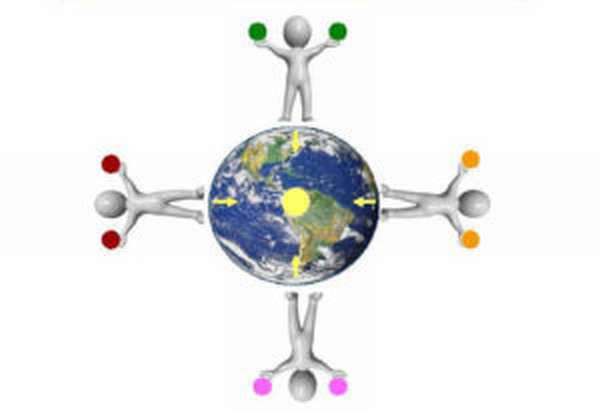
Every object in the Universe is in motion. Gravity is a phenomenon that is familiar to all individuals from an early age. We are born into the gravitational field of our planet, and we instinctively understand this physical occurrence, making it seem effortless to comprehend.
However, the question of why and how objects are attracted to one another remains partially unsolved, despite ongoing research.
In this article, we will explore Newton’s theory of universal gravitation, which is a classical explanation of this phenomenon. Before diving into formulas and examples, let’s first discuss the nature of the gravity problem and provide a definition for it.
Perhaps the exploration of gravity marked the inception of natural philosophy (the study of comprehending the essence of matters), or perhaps it was natural philosophy that sparked the inquiry into the essence of gravity, but regardless, the question of the gravitational pull of objects remains. The fascination with motion can be traced back to ancient Greece.
Motion was perceived as the fundamental sensory attribute of a body, or more precisely, a body was deemed to be in motion as long as it was observed to be so. If we are unable to measure, weigh, or physically perceive a phenomenon, does it imply that said phenomenon is non-existent? Certainly not. Since Aristotle recognized this, contemplation on the nature of gravity has persisted.
The issue of movement

Allow us to engage in a thought experiment. Imagine holding a small ball in our left hand and an identical ball in our right hand. If we release the ball in our right hand, it will fall downwards. However, the ball in our left hand remains stationary.
Now, let us pause the passage of time in our minds. The falling ball in our right hand is suspended in mid-air, while the ball in our left hand remains unmoving. The right ball possesses the energy of motion, while the left ball does not. But what truly distinguishes them in a profound and meaningful way?
Where is the indication in which part of the descending ball it states that it must be in motion? It possesses the same mass, the same volume. It possesses the same atoms, and they are indistinguishable from the atoms of the stationary ball. Does the balloon possess potential energy? Yes, that is the accurate response, but how does the ball perceive its own potential energy, where is it embedded within?
This was the predicament that Aristotle, Newton, and Albert Einstein undertook. And all three brilliant intellectuals partially resolved this predicament individually, but there are several inquiries that still need to be elucidated in the present day.
Newton’s Law of Gravity
In 1666, Sir Isaac Newton, the preeminent English physicist and mathematician, made a groundbreaking discovery known as the law of universal gravitation. This revolutionary principle quantifies the force with which all matter in the universe is attracted to one another. When asked to describe the law of universal gravitation, your response should be as follows:
The force of gravitational interaction between two bodies is directly proportional to the masses of the bodies and inversely proportional to the distance separating them.
The formula for the law of gravitation can be expressed as:
- F represents the force of attraction,
- m represents the mass,
- r represents the distance,
- G represents the gravitational constant, which is equal to 6.67-10-11 m³/(kg-c²).
So, if we only consider the force of attraction, what does weight represent?
The force is a vector quantity, but in the law of universal gravitation, it is typically written as a scalar. In the vector representation, the law would appear as follows:
However, this does not imply that the force is inversely proportional to the cube of the distance between the centers. The relationship should be understood as a unit vector directed from one center to the other:
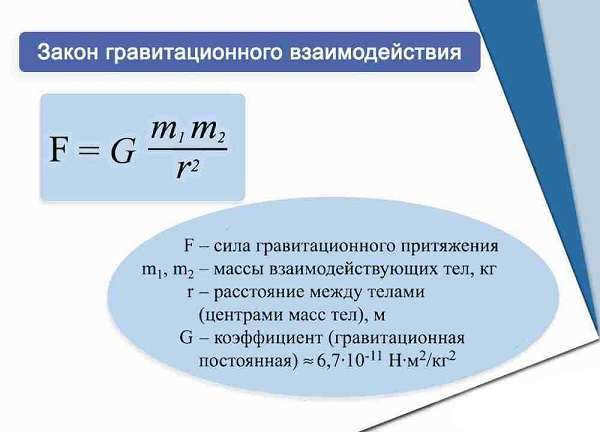
Law of Gravitational Interaction
Weight and gravity
Upon examining the law of gravitation, it becomes evident that we experience the Sun’s gravitational attraction to a lesser degree compared to the Earth’s gravitational pull. This is not surprising given that although the Sun possesses immense mass, it is situated at a significant distance from us. The Earth, on the other hand, is also remote from the Sun, yet it is drawn towards it due to its substantial mass. We will delve into the matter of calculating the gravitational force between the Sun, Earth, and ourselves a little later.
As far as our understanding goes, the force of gravity can be represented as:
where m represents our mass and g denotes the Earth’s acceleration due to gravity (9.81 m/s^2).
Important! There aren’t two, three, ten types of gravitational forces. Gravity is the sole force that quantifies attraction. Weight (P = mg) and gravitational force are synonymous.
If our mass is denoted as m, the mass of the globe as M, and its radius as R, then the gravitational force exerted on us is equal:
Therefore, since F = mg:
The mass m is decreased, and we are left with an expression for the acceleration of free fall:
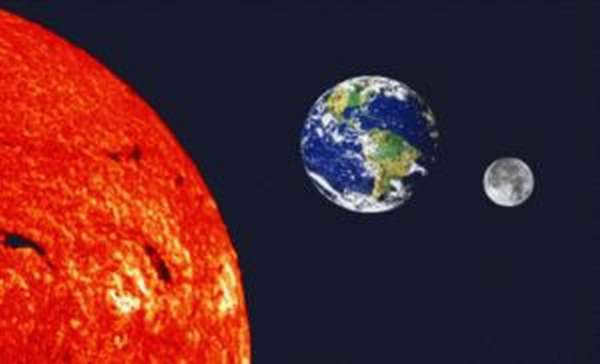
As observed, the acceleration due to gravity remains constant due to the presence of certain fixed values such as the Earth’s radius, its mass, and the gravitational constant. By substituting the respective values of these constants, we find that the acceleration due to gravity is equivalent to 9.81 m/s2.
However, it is important to note that the acceleration due to gravity varies slightly at different latitudes, as the Earth is not a perfect sphere. Consequently, the acceleration due to gravity differs at various locations on the Earth’s surface.
Now, let us delve into the gravitational attraction between the Earth and the Sun. We shall attempt to demonstrate through an example that the Earth exerts a greater gravitational force on us compared to the Sun.
For convenience, let us assume an individual’s mass as m = 100 kg. Then:
- The Earth has a mass of approximately 6×10^24 kg.
- The Sun has a mass of approximately 2×10^30 kg.
- The distance between the Earth and the Sun is about 1.5×10^11 meters.
The gravitational attraction between a person and the Earth:
This is evident from the simple expression for weight (P = mg).
The gravitational attraction between a person and the Sun:
As you can see, the Sun attracts our planet almost 2000 times more strongly.
How can we calculate the gravitational force between the Earth and the Sun? Here’s how:
Now we can see that the Sun attracts our planet more than a trillion trillion times more strongly than the Earth attracts you and me.
The initial cosmic speed
Following the discovery of the law of universal gravitation by Isaac Newton, he pondered the necessary velocity for a body to surpass the gravitational field and permanently depart from the planet.
Indeed, his visualization differed slightly; rather than envisioning a vertically positioned rocket pointing towards the sky, he imagined a body making a horizontal leap from the peak of a mountain. This served as a logical representation because at the mountaintop, the gravitational force is slightly diminished.
For instance, at the summit of Mount Everest, the acceleration of free fall is not equivalent to the typical 9.8 m/s2, but rather nearly m/s2. It is due to this reason that the atmosphere becomes so sparse at such altitudes, as the air particles are no longer as strongly influenced by gravity as those that have descended to the surface.
Let’s explore the concept of cosmic velocity.
Cosmic velocity, also known as the first space velocity (v1), refers to the speed at which a body can leave the surface of a planet, such as Earth, and enter a circular orbit.
To determine the numerical value of this velocity for our planet, we can utilize Newton’s second law of motion for a body in circular orbit:
Here, h represents the height of the body above the planet’s surface, and R is the radius of the Earth.
Within an orbit, the body experiences centrifugal acceleration, which can be expressed as:
When we simplify the equation by canceling out the masses, we obtain:
This velocity is referred to as the first space velocity.
It is important to note that the cosmic velocity is not influenced by the mass of the body. Therefore, any object accelerated to a speed of 7.9 km/s would be capable of leaving our planet and entering into orbit around it.
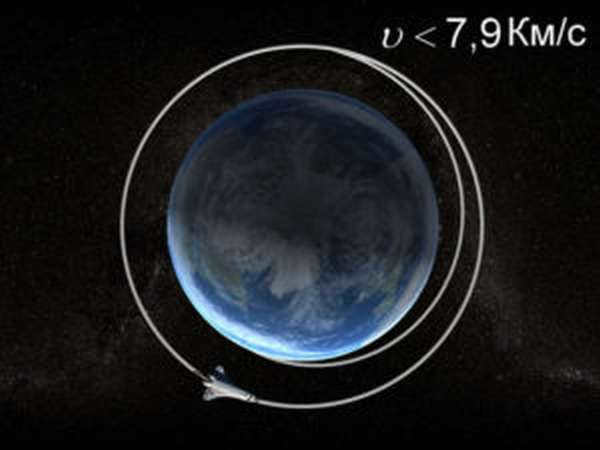
The initial speed required to escape the gravitational pull of the Earth is known as the first space velocity.
The critical speed to leave Earth’s gravitational field
Nevertheless, even after achieving the first space velocity, the body will still be influenced by the Earth’s gravitational pull. To completely break free from it, the second space velocity is necessary. Once the body reaches this speed, it escapes the gravitational field of the planet and any closed orbits.
Important! There is a common misconception that astronauts had to reach the second space velocity in order to reach the Moon, as they needed to detach from the Earth’s gravitational field. However, this is not accurate as the Earth-Moon system exists within the Earth’s gravitational field, with their center of gravity located inside the Earth itself.
To determine this velocity, let’s approach the problem from a different angle. Imagine a scenario where a celestial object is journeying from an infinite distance towards the planet. The question at hand is: what magnitude of speed will be attained upon touchdown on the planet’s surface (disregarding the presence of any atmosphere)? This represents the velocity necessary for the celestial object to escape the gravitational pull of the planet.
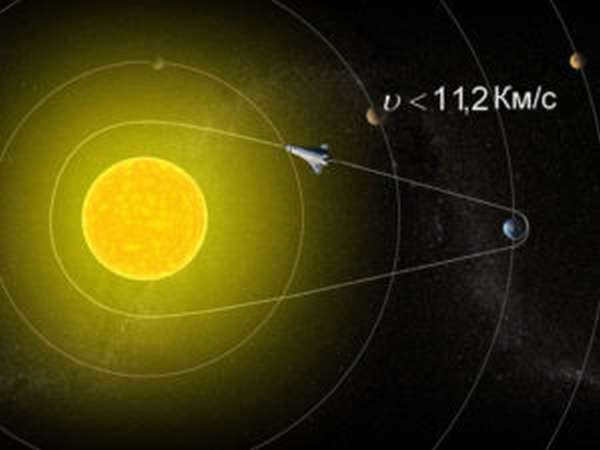
The concept of the second space velocity can be expressed by the law of conservation of energy:
where the work of gravity, represented by A = Fs, is on the right-hand side of the equation.
From this equation, we can deduce that the second space velocity is equal to:
Therefore, the second cosmic velocity is equal to the first cosmic velocity multiplied by:
Law of Universal Gravitation. Physics 9 class
Law of Universal Gravitation.

